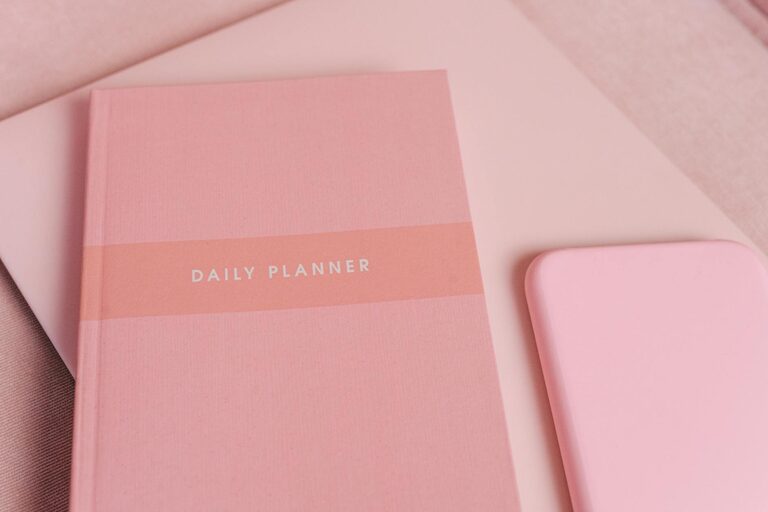Choosing the right notebook might seem like a simple task, but it can make a big difference in how often you use it and how much you enjoy writing. Whether you want a notebook for journaling, jotting down ideas, or organizing your tasks, the key is finding one that suits your personal needs and style. In this post, we’ll walk you through practical steps to select a notebook you’ll actually use consistently.
Why Choosing the Right Notebook Matters
A notebook is more than just paper bound together. It can be a tool for creativity, productivity, or reflection. When you pick a notebook that feels right, it motivates you to write and helps you establish a valuable habit. On the other hand, a poor choice might leave you frustrated or uninterested, and your notebook may end up unused on a shelf.
Consider Your Purpose
Before you shop, think about how you plan to use your notebook. Your purpose will guide your choices about size, style, and page layout.
Common Notebook Uses
– Journaling: Personal reflections, gratitude logs, or dream journals.
– Work and Study: Meeting notes, project planning, or class notes.
– Creative Writing: Story ideas, poetry, or sketches.
– To-Do Lists and Planning: Daily tasks, goal-setting, or habit tracking.
Once you’re clear on how you’ll use it, you can focus on features that support those activities.
Pick the Right Size
Notebooks come in many sizes, and the best one depends on your lifestyle and use case.
– Large (A4 or letter size): Good for detailed notes or sketches but less portable.
– Medium (A5): A popular size for both portability and enough writing space.
– Small (pocket size): Easy to carry everywhere but offers limited space.
If you want to keep your notebook handy for spontaneous notes, a compact size may work best. For in-depth projects or journaling at a desk, a larger notebook might be more comfortable.
Choose Your Preferred Paper Type and Quality
Paper quality affects how the notebook feels and performs, especially if you use different pens or want to avoid ink bleed-through.
– Weight (gsm): Heavier paper (usually 90gsm or more) prevents ink from seeping through.
– Texture: Smooth paper is great for pens and markers; textured paper works well with pencils.
– Color: White, cream, or recycled paper each offer different aesthetics.
If you plan to use fountain pens or markers, look for notebooks with thicker, high-quality paper designed for those inks.
Decide on the Binding Style
Binding affects notebook durability and how easy it is to write in.
– Spiral-bound: Allows the notebook to fold flat or even fold back; perfect for note-taking on the go.
– Perfect-bound (glued spine): Has a clean look but may not lay flat easily.
– Thread-sewn: Durable and often high-quality, can lay flat with gentle care.
– Ring binders: Allows adding or removing pages but can be bulkier.
Think about whether you prefer your notebook to stay open flat or if portability in a bag is a priority.
Select the Page Layout
The right page layout encourages you to write comfortably and organize content.
– Lined: Classic and versatile; good for most writing.
– Blank: Great for sketches, doodles, or freeform writing.
– Dotted/Grid: Helpful for bullet journaling, design, or structured notes.
– Mixed: Some notebooks combine different page styles for versatility.
Try to pick a layout that matches how you intend to write or draw.
Choose a Cover That Inspires You
The cover is the first thing you see and holds your notebook together. Selecting a design and material that you love makes it more likely you’ll use the notebook regularly.
– Hardcover: Offers protection and durability.
– Softcover: Lightweight and flexible; easier to store.
– Leather, fabric, or synthetic: Provides different looks and feels.
– Design and color: Choose something that motivates you or reflects your personality.
Some notebooks also come with pockets and elastic bands to keep everything secure.
Consider Additional Features
Extra features can add value or convenience:
– Page numbers: Useful for referencing.
– Index or table of contents: Helps you organize your notes.
– Perforated pages: Allow easy removal.
– Pen loop: Keeps your pen attached.
– Bookmarks or ribbons: Mark your current page.
Think about which extras might help you stay organized and motivated.
Try Before You Buy (If Possible)
If shopping in person, flip through notebooks to test the paper quality and size. Feel the cover and try writing on sample pages if available.
If buying online, check reviews and product images carefully. Many sellers specify paper weight, binding, and dimensions in detail.
Make a Commitment to Use It
Once you choose your notebook, commit to using it regularly. Here are some tips to help:
– Keep it in a visible spot.
– Set aside time daily or weekly for writing.
– Use prompts or themes to spark ideas.
– Don’t worry about perfection—just write.
Final Thoughts
Choosing a notebook you’ll actually use is about matching the notebook’s features to your personal habits and needs. By thinking through size, paper quality, binding, and style, you can find a notebook that encourages you to write, plan, and create. Happy writing!
—
Feel free to share your favorite notebook styles or tips in the comments!


